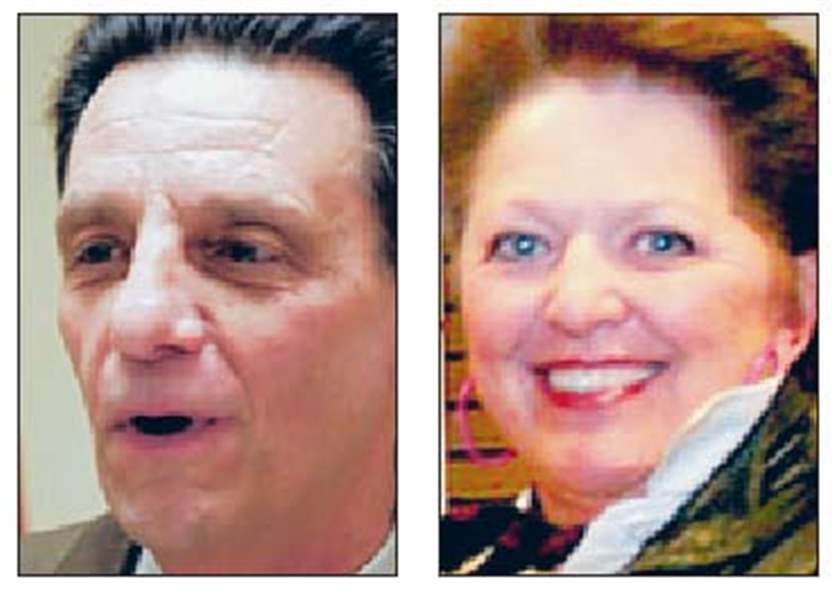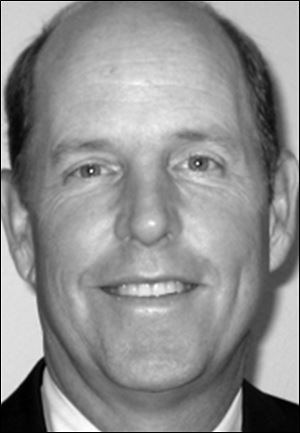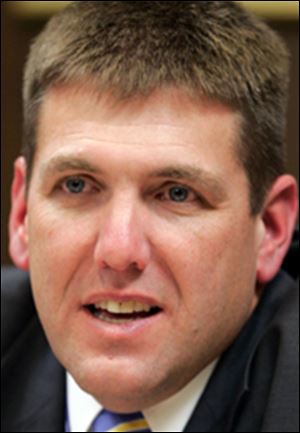
Money woes hurt YMCA at a time of large salaries
7/30/2009
Robert Alexander is president and chief executive of the YMCA/JCC. His wife, Stephanie Dames, is senior vice president of development.
This week the YMCA and Jewish Community Center of Greater Toledo announced they are closing the Y branch in South Toledo because expenses there outpace revenues by $300,000 a year.
And officials said that because of a decline in government contracts, membership dues, and program fees, the Y organization had cut expenses by more than $800,000 systemwide, just over 5.1 percent of its annual budget.
But a survey by The Blade shows that the YMCA s president and chief executive officer, Robert Alexander, is the highest-paid executive of any social-service organization in the Toledo area, as well as the highest-paid president/CEO of all YMCA systems in Ohio.
Mr. Alexander, who became CEO in 1989, is paid $265,441 a year, according to the organization s latest tax filing in 2007, with his total compensation package pegged at $298,000.
He leads an organization with an annual budget of $29.8 million as of 2007, including $4.8 million in government grants for programs that help vulnerable low-income residents.
An assistant for Mr. Alexandertold The Blade yesterday he would not discuss his compensation, and referred questions to Paul Sobb, a certified public accountant and chairman of the YMCA board s compensation committee.

Later reached at his home in suburban Lambertville, Mr. Alexander said, Guess what, man, I m off! and hung up the phone.
Mr. Sobb defended the president s compensation package and said that Toledo s YMCA system and its 11 branches serve 307,000 people a year making it the seventh-largest such system in the country in 2008.
It s a very complex organization that serves a lot of people in this community, Mr. Sobb said. You can t just measure it by the size of the city. It s also the footprint and the number of people served.
Mr. Sobb said the YMCA in 2006 formed a compensation committee, consisting of accountants, lawyers, and former executives of two Fortune 500 companies.
The committee contracted with the Toledo office of Findley Davies, a human resources consulting firm, to help determine Mr. Alexander s compensation, he said.
Findley Davies also provides the committee with salary surveys of other nonprofit organizations
The committee and its process created some clarity and verification that what was going on in the Y system was very appropriate based on size of budget, size of market, the number of employees, and all the variables that come into play, Mr. Sobb said.

Silverman
A review of tax filings from YMCA organizations in Ohio s biggest cities show that Mr. Alexander s salary is the highest in the state, even though the annual budgets of YMCAs in Columbus and Cincinnati are much larger than the Toledo organization.
Mr. Alexander s salary also topped his counterparts in Pittsburgh, Louisville, Milwaukee, and Indianapolis, with all the YMCAs in those cities except Pittsburgh operating on larger annual budgets.
The Toledo YMCA s directors and officers were paid $815,739 in 2007, according to the organization s income tax filing. YMCA officials yesterday refused to provide current salaries for Mr. Alexander and his top staff.
Among the highest-paid employees at the Toledo YMCA are Mr. Alexander s wife, Stephanie Dames, senior vice president of development, who made $130,807 in 2007, and his daughter-in-law, Jody Alexander, executive director of the Y s Fort Meigs branch in Perrysburg, who was paid $85,686.
The familial relationships were declared in the organization s tax filing.
Ms. Dames is the second highest-paid officer at the YMCA, with her total compensation package listed on the Y s 2007 tax filing as $151,846.
Mr. Sobb said neither Ms. Dames nor Ms. Alexander report to Mr. Alexander, and that Mr. Alexander holds no direct influence over their compensation.
We have the proper governance in place so that everything is being done above board and correctly, Mr. Sobb said. Nonprofit organizations can lose their nonprofit status if there are excess of compensation issues.
YMCA officials said this week they intend to close the South Toledo Y, at 1226 Woodsdale Park, effective Aug. 29, citing the annual deficit at the branch and the loss of $2 million in state funding for the Early Learning Initiative program.
The program, operated out of the branch and at four other sites in Toledo, will be closed. YMCA officials said they are closing the branch even though it has 800 members.
Y officials also announced they will donate the complex, recently appraised at $445,400, to CedarCreek Church.

Kitson
At a time when city and county governments are reducing staff and cutting costs because of declining revenue, at least 25 executives of local nonprofit social-service organizations and charities continue to receive more than $100,000 a year in total compensation, with some climbing close to $200,000 or above.
The executives and board members who determine their salaries said the pay is in line with what others working for similar organizations elsewhere receive.
You want to retain good leadership, said the Rev. Dan Rogers, president and CEO of the Cherry Street Mission Ministries, an organization that serves the homeless including a men s shelter that holds 150, a women s shelter that houses 51, and a feeding program that provides more than 700 meals a day.
It is not just about the money. Could another person be leading the organization at a lower salary and would they have the skills and leadership capacity to do the work that is required? Mr. Rogers asked.
Cherry Street Mission, privately funded through donors with revenues of $4.7 million a year, has one employee making $100,000 Rodney Schuster, the mission s development director.
With Mr. Rogers salary of $92,789, the pair s total compensation account for 4 percent of the mission s revenues.
When I look at our compensation, we also want to keep people, Mr. Rogers said. It s a countermeasure to brain drain. Part of the reason we are having a brain drain is that our economies of scale aren t keeping leaders we vitally need in our city.
Greg Heldt, the director of charity review for the Better Business Bureau of Greater Toledo, said having family members working together in executive positions doesn t pose a conflict of interest unless the family members are involved in setting each other s salaries.
It does become a conflict of interest when family members serve on the board of a nonprofit run by another family member, he said.
In recent months, Mr. Heldt said he s addressed concerns that family members of the executive director were serving on the board of the Toledo Seagate Food Bank, where Deb Vas, the executive director, is paid $31,000 per year.
While Mr. Heldt said Seagate has taken measures to come into compliance with the Better Business Bureau s standards, the region s other major food bank hasn t been so willing.
The Toledo Northwestern Ohio Food Bank has been criticized by other charitable organizations for allegedly using deceptive fund-raising techniques.
Through a complex arrangement which Mr. Heldt said lacks transparency James M. Caldwell is paid $152,000 for running the food bank, the James C. Caldwell Community Center, and Second Harvest Community Services of Northwest Ohio, the parent company of the other organizations.
It is something that will catch our eye, Mr. Heldt said. We try to take into consideration the type of charity we are looking at and what field that charity is in. Different types of charities require different kinds of talent, and that talent might come at a different price tag for each charity.
He added, It is not fair to assume that just because someone is working for a charity means they need to make $25,000 a year. They are doing hard work also, and they need to be paid accordingly.
Last year, the Jamie Farr Owens Corning Golf Classic paid out $350,000 to organizations in northwest Ohio that assist children, the disabled, and the poor.
For every dollar of net proceeds the golf classic generates, 90 cents goes to pay the salaries and benefits of the classic s executive director, Judd Silverman, who is paid $180,000 a year; the classic s namesake, Jamie Farr, who receives a $30,000 stipend, and Sandy White, the director of operations, who is paid $60,000, according to the nonprofit organization s most recent tax filing.
The golf classic which in 2007 collected $4.3 million in revenues and spent $3.7 million putting on the tournament regularly promotes itself as a charitable organization that has given more than $6.2 million to 100 community groups since its inception 25 years ago.
Raising the money
Most of the money raised goes to prizes for golfers.
I spend 99 percent of my time raising the money, said Mr. Silverman, who also led the organization s efforts to present the men s Division One NCAA golf championship earlier this year and the U.S. Senior Open Championship in 2011, both at Inverness.
Mr. Silverman, who in addition to his salary receives $20,000 in benefits and a $16,000 expense account, founded the tournament and said that he and Mr. Farr were not paid in the tournament s early years.
I am the salesperson. There are many tournament directors in this country that have sales directors working for them. I m the guy out there generating the revenue, as well as overseeing the execution of the event, Mr. Silverman said.
Mr. Silverman added that the Jamie Farr Owens Corning Classic generates $5 million to $6 million for the local economy and is the only nationally televised yearly sporting event in northwest Ohio. The event pays $365,000 to ESPN2 each year to televise the three-day event.
Mr. Farr s $30,000 stipend is compensation for his time and effort, Mr. Silverman said.
Steve Mickus, last year s chairman of the classic, said Mr. Silverman s salary is designed to reflect what comparable PGA and LPGA tour event directors are paid.
Mr. Silverman said the salary of the executive director of the John Deere Classic in Moline, Ill., is $212,000 a year.
There s another thing you have to understand, said Mr. Mickus, president and CEO of Mercy Health Partners, Judd has many responsibilities, but he is not only in charge of operations of the Jamie Farr, i.e. making sure the golf tournament comes off well but on top of that, he s also his own chief development officer and fund-raiser.
Most-visible leaders
Some of the nonprofit executives who are among the highest-paid leaders are also among the most visible in northwest Ohio.
Bill Kitson, the executive director of the United Way of Greater Toledo, is paid $129,953 a year from the agency with $18.2 million in annual revenue.
Mr. Kitson said he understands that the public is sensitive to salaries, especially when it comes to social-service organizations and nonprofits.
There are always going to be people who will question a six-figure salary, Mr. Kitson said. That s a lot of money in today s society.
You want to make sure that if someone is receiving that compensation they are doing the work they are supposed to be doing for the community, Mr. Kitson said.
Staff writer JC Reindl contributed to this report.
Contact JC Reindl at:jreindl@theblade.comor 419-724-6065.